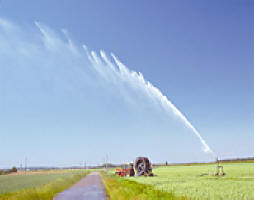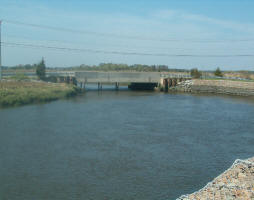 Egypt: Disaster looms for Delta region
Egypt: Disaster looms for Delta region
Egypt's Delta region faces a natural disaster of massive proportions by 2020 unless urgent action is taken to better manage scarce fresh water resources and come up with solutions to mitigate the effects of rising sea levels, according to government officials.
The country is facing the dual threat of water needs surpassing resources by 2017, and rising sea levels in the decades ahead inundating much of the fertile Delta region, home to 60 percent of Egypt's 78 million people, it added.
Researchers predict the Mediterranean will rise by 30-100cm by the end of the century. A one-metre sea-level rise would submerge Alexandria.
Cairo has allocated US$300 million to build concrete walls to protect Alexandria's beaches as part of a "national strategy study" to combat the coming floods.
"The plan now is to protect the beaches in the north, but after this the government will need to ask the world for help," according to Hussein Al-Atfy, secretary for the Egyptian National Committee on Irrigation and Drainage, adding that the cost of preventative measures was too high for Egypt alone.
Water shortages are already hitting the poor - especially in areas surrounding new development projects which take massive amounts of water away from poorer areas in order to satisfy the growing needs of the new areas.
Reduced Nile water flows coupled with Egypt's rapidly growing population have already put a strain on agricultural output. The Ministry of Trade has extended a ban on exporting domestic crops such as rice, which consume a lot of water, till 2010.
Minister of Public Works and Water Resources Mahmoud Abdel Halim Abu Zeid said Egypt had "already entered the cycle of water poverty".
In a recently released report, the cabinet's Information and Decision Support Centre, a government research body, said Egypt would need 86.2 billion cubic metres (cu. m) of water in 2017, while resources would only reach 71.4 billion cu. m.
In 2006 Egypt's water resources were 64 billion cu. m, of which the Nile provided 55.5 billion cu. m, or 87 percent. But by 2017 the Nile is expected to supply only 80.5 percent of Egypt's resources, the report said.
Egypt's problem is compounded by the other 10 Nile basin countries demanding bigger shares of Nile water to compensate for reduced rainfall.
While Egypt and Sudan are the Nile's largest consumers, other countries upstream are demanding a revision of the 1929 agreement between Egypt and Britain giving Egypt the largest quota of Nile water.
According to this accord, which is not recognized by the other eight Nile basin countries, Egypt is guaranteed 55.5 billion cu. m per year.
Some experts warn of military conflict between the 10 Nile basin countries over water allocations if differences are not resolved in time. Egypt's Foreign Ministry considers Nile water a matter of national security and has argued that unlike other basin countries, it has no other source of fresh water.
| Contact information |
Irin News - © IRIN 2009.
|
|---|---|
| News type | Inbrief |
| File link |
http://www.irinnews.org/Report.aspx?ReportId=86472 |
| Source of information | Irin News - © IRIN 2009. |
| Keyword(s) | floods, Water shortages |
| Subject(s) | DRINKING WATER AND SANITATION : COMMON PROCESSES OF PURIFICATION AND TREATMENT , NATURAL MEDIUM , PREVENTION AND NUISANCES POLLUTION , RISKS AND CLIMATOLOGY |
| Relation | http://www.semide.net/countries/fol749974/country769281 |
| Geographical coverage | Egypt |
| News date | 07/10/2009 |
| Working language(s) | ENGLISH |
 you are not logged in
you are not logged in





